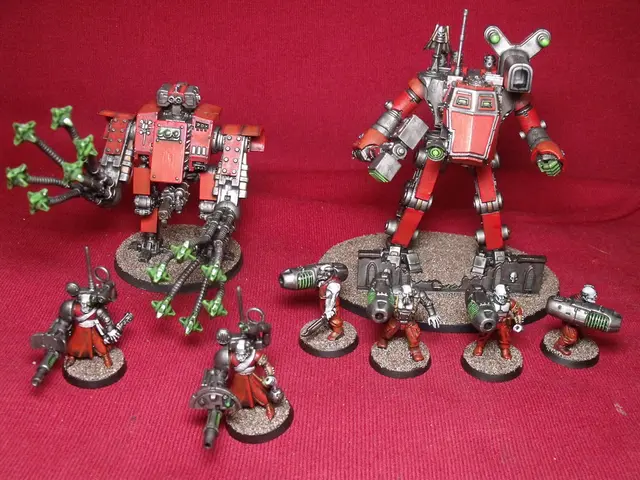The Shockingly Clever Ocean Orbs: Sea Slugs
Sea Slugs Acquire Genes and Corresponding Abilities Through Consumption of Plants
Got your attention? Here's the lowdown on these underwater wonders that'll make you question the lines between plant and animal. Picture a creature so smart, it's figured out how to pilfer the life-giving machinery from the plants it dines on and repurpose it for its very own existence. Nope, we're not talking about a Marvel supervillain - it's the humble, yet astonishingly resourceful sea slug! Yes, you heard right: these gelatinous marvels have successfully swindled solar power straight from the plants they munch on, transforming them into their own personal powerhouses. If you thought the ocean couldn't get any more fascinating, brace yourself!
Sea Slugs - Nature's Chameleons
But they're not all flashy colors and camouflage. These fascinating creatures have tricks up their proverbial sleeves. Some sea slugs have evolved to more than just mimic the plants they eat - they've learned to hijack the very essence of those plants. It's as if they're greedily devouring more than just the nutrients, because let's be real, who among us hasn't envied a houseplant's ability to produce its own energy from the sun?
The Green Revolution: Solar-Powered Creatures
Sounds like a scene from a sci-fi movie? Think again! The Elysia chlorotica, the poster child for this earth-shattering discovery, is the embodiment of a plant-animal hybrid. After chowing down on green algae, these cheeky creatures hijack the algae's chloroplasts and make them their very own powerhouses. Sunlight + some clever biochemistry = a solar-powered slug that can survive for weeks without so much as a hint of food.
The Chloroplast - The Power Within
Chloroplasts - tiny solar panels within plant cells - are the unsung heroes of photosynthesis, or the process of capturing sunlight and converting it into usable energy. For most animals, eating a plant means gobbling it up and moving along. But some sea slugs are sneaky squatters; instead of scraping the barrel and moving on, they've figured out how to take up temporary residence inside those stolen solar panels. It's as if you ate spinach, carried around the food in your mouth, and watched it grow into anothergreen leafy powerhouse.
The Art of Cellular Theft - Kleptoplasty
Scientists have bestowed on this extraordinary method of digestion-cum-solidarity a name worthy of its jaw-dropping nature: kleptoplasty. It's like picking up a wallet from a stranger and using the credit card without raising an eyebrow. In this biological heist, sea slugs don't just destroy their plant-based prey - they cart off the vital organelles and repurpose them within their own cells. These looted organelles can keep working for weeks, possibly even months, supplying their slug hosts with free, sun-powered energy.
The Debate: Are They Renters or Owners?
For years, researchers stuck their noses in the air and debated: do these sea slugs pirate the chloroplasts or do they really own them? Recent studies have cracked open the door to the latter possibility - it seems some sea slug species have acquired genes from their algal roommates, allowing them to maintain the jackpot of captured chloroplasts for longer periods. This gene transfer, known as horizontal gene transfer, is a mind-bending twist that challenges our understanding of evolution and inheritance.
The Creature's Underground Railway - How Slugs Use Sunlight
Once the captured chloroplasts are securely tucked away within the slug's cells, the real wizardry unfolds. With the appropriate genes in place, these solar-powered slugs can mimic the plant's photosynthesis process, drawing energy from sunlight to fuel their bodies. This remarkable adaptation grants them the incredible ability to survive for months without ever bothering to hunt for food, flipping the script on survival strategies in the animal kingdom.
The Question on Everyone's Lips: Why Don't All Animals Do This?
It's easy to wonder why more animals haven't jumped on board the photosynthesis train. The truth is, maintaining those stolen chloroplasts is a complex, high-maintenance job. It takes a unique set of circumstances, including a specific diet, behavior, and a sprinkle of evolutionary luck to pull off such an unconventional feat.
The Picky Eater: Dining Delicacies and Powerhouses
Not all parties are equal. Sea slugs have a penchant for cherry-picking the most suitable algae for their chloroplast-rich feasts. They travel the ocean's vast menu of seaweed and algae, meticulously choosing the concoctions that have the biggest bargains on offer. Their culinary preferences shape their abilities, and their meal choices determine their evolutionary fates.
The Dance of Life in a Changing World
But the story doesn't end with sea slugs and algae. The partnership between these two species reveals an intricate dance of survival, a tangled web of evolution's creative solutions. As we continue to unearth the secrets of these tantalizing underwater conundrums, one thing becomes increasingly clear: the boundaries between plant and animal are fluid, and the classification of species is an ever-evolving puzzle worthy of 3-D complexity.
Other Players in the Gene-Borrowing Game
And they're not alone. Aphids and certain species of fungi have also been caught in the act of horizontal gene transfer, indicating that history's most surprising swaps are far from rare. It seems the natural world is brimming with fascinating cases of adaptation, evolution, and the unexpected, which only serve to deepen our admiration for the magic of creation.
The Long Reach of Horizontal Gene Transfer
Imagine a world where flowers, cats, and humans could trade DNA with each other. Sounds like the plot of a dystopian sci-fi novel, right? Well, not entirely. Sea slugs and their ilk teach us that nature doesn't always abide by our rigid labels and categories. In fact, they remind us that there's a murky, tangled web of genetic exchange, episodes of which are happening all around us in the natural world.
A Glint of Hope in the Darkest corners of Science
The story of the green sea slugs and their ability to borrow, integrate, and manipulate genes can read like a doomsday prediction of a runaway world. But there's a ray of hope amid the chaos. The partnership between sea slugs and algae may hold crucial insights into developing methods to better harness solar power, creating hybrid plants that can flourish under a wider variety of conditions. If Mother Nature can prove that evolution is capable of great leaps, perhaps humanity is capable of a great leap forward as well.
So, Why Should We Care About Sea Slugs?
They're small, yes. But their example can inspire us to question the boundaries of life and push the limits of what's possible. Perhaps their tenacity and resourcefulness could inspire humanity to develop innovative solutions to the biggest challenges of our time. And hey, it's always fun to learn that reality can be stranger and more surprising than even the wildest science fiction predictions.
One More Thing
Sea slugs are a marvel of nature, but remember, they're wild animals relying on their environment to thrive. Let's respect them and their homes however we can. That means no collecting or disturbing them in their natural habitats - instead, gaze upon their marvels from afar, safe in the knowledge that humanity still has much to learn from this watery realm.
- Sea slugs have evolved to more than just mimic the plants they eat, they've learned to hijack the very essence of those plants.
- After consuming green algae, sea slugs like the Elysia chlorotica hijack the algae's chloroplasts and use them as their own powerhouses.
- Chloroplasts, the unsung heroes of photosynthesis, are repurposed within sea slugs' cells through a process called kleptoplasty, creating solar-powered slugs.
- This method of digestion-cum-solidarity has been named kleptoplasty, a biological heist reminiscent of picking up a wallet from a stranger and using the credit card without raising an eyebrow.
- Recent studies have shed light on gene transfer between sea slugs and algae, indicating that some sea slug species have acquired genes from their algal roommates, allowing them to maintain the captured chloroplasts for longer periods.
- With the appropriate genes in place, these solar-powered slugs can mimic the plant's photosynthesis process, drawing energy from sunlight to fuel their bodies.
- As we continue to uncover the secrets of these fascinating underwater conundrums, more curious cases of adaptation, evolution, and the unexpected are being revealed, further deepening our admiration for the magic of creation.
- Aphids and certain species of fungi have also been caught in the act of horizontal gene transfer, hinting at a vast network of genetic exchange in the natural world.
- The partnership between sea slugs and algae may hold crucial insights into developing methods to better harness solar power and create hybrid plants that can flourish under a wider variety of conditions, inspiring humanity to push the limits of innovation and sustainable living.








